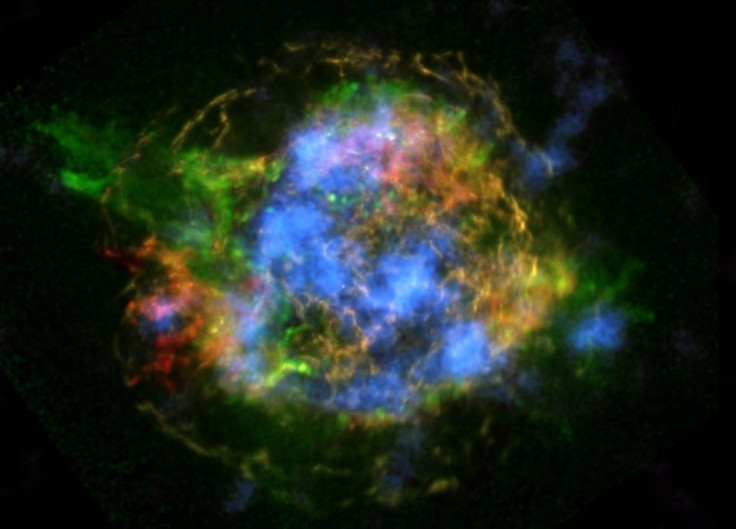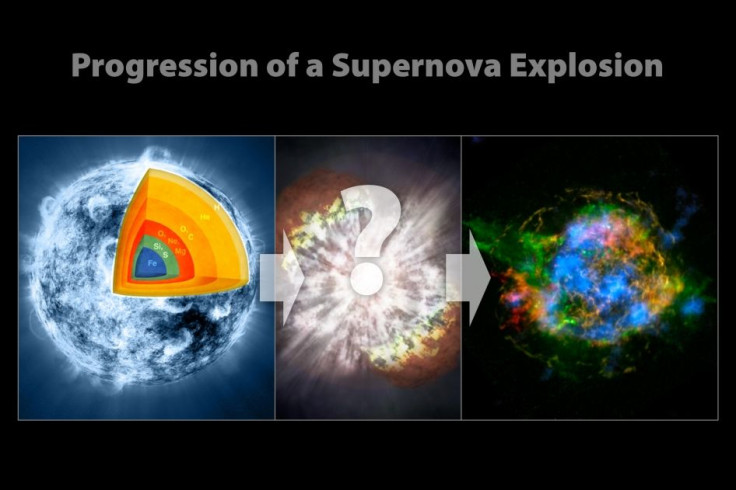How Stars Explode: NASA's NuSTAR Solves One Of Astronomy's Biggest Mysteries

Astronomers using NASA’s Nuclear Spectroscopic Telescope Array, or NuSTAR, have successfully unraveled what is regarded as “one of the biggest mysteries in astronomy” -- how stars blow up in supernova explosions.
NuSTAR, a high-energy X-ray observatory, has created the first map of radioactive material in a supernova remnant called Cassiopeia A, or Cas A, to reveal how shock waves likely tear massive dying stars apart, the researchers said in a study, published in the Feb. 20 issue of Nature.
“Stars are spherical balls of gas, and so you might think that when they end their lives and explode, that explosion would look like a uniform ball expanding out with great power,” Fiona Harrison, the principal investigator of NuSTAR at the California Institute of Technology in Pasadena, Calif., said in a statement. “Our new results show how the explosion's heart, or engine, is distorted, possibly because the inner regions literally slosh around before detonating.”
According to the study, Cas A was created when a massive star exploded as a supernova, leaving behind a dense stellar corpse and its remains. The researchers said that the light from the explosion reached Earth about 350 years ago, when it could have appeared to observers as a star that suddenly brightened up. The remnant is located 11,000 light years away from Earth.

Supernovas seed the universe with many elements, including the gold in jewelry, the calcium in bones and the iron in blood, when stars at least eight times as massive as the sun blow up. And the high temperatures and particles created in the blast blend lighter elements together to create heavier elements.
The latest NuSTAR data complement previous observations made by Chandra, which showed that elements such as iron were heated by shock waves farther out from the remnant's center.
In the case of Cas A, the element is titanium-44, which has an unstable nucleus produced at the heart of the exploding star. According to the researchers, the titanium concentrated at the star’s center points to a possible solution to the mystery of how the star met its demise. When researchers simulate supernova blasts with computers, the main shock wave often stalls out and the star fails to shatter.
“The latest findings strongly suggest the exploding star literally sloshed around, re-energizing the stalled shock wave and allowing the star to finally blast off its outer layers,” the researchers said.
Check out the video here:
© Copyright IBTimes 2024. All rights reserved.






















